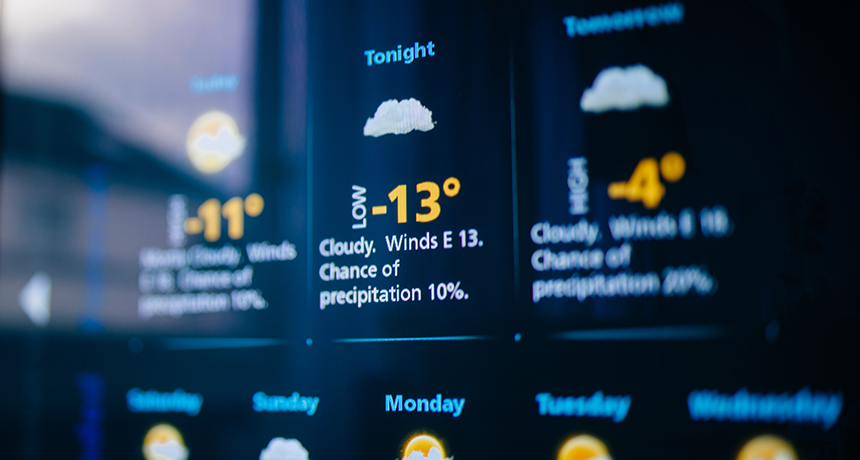Technology
Artificial Intelligence has the capability to predict weather conditions in a matter of seconds, without the need for powerful supercomputer systems.

An AI-powered weather program can achieve the same level of accuracy as traditional forecasts produced over hours or days on powerful supercomputers, according to its developers. This is accomplished in just a single second on a desktop computer.
Since the 1950s, weather forecasting has relied on physics-based models that extrapolate from data collected via satellites, balloons, and weather stations. These numerical weather prediction (NWP) calculations, however, are incredibly resource-intensive and require vast, costly, and energy-consuming supercomputer systems.
In recent years, researchers have attempted to streamline the weather forecasting process by incorporating AI technology. For instance, Google scientists developed an AI tool that could replace small portions of complex code within a weather model, significantly reducing the required computational power. Building on this, DeepMind later used AI to replace the entire forecasting process. This approach has now been adopted by the European Centre for Medium-Range Weather Forecasts (ECMWF), which launched an Artificial Intelligence Forecasting System just last month.
However, these gradual expansions of AI’s role in weather prediction have fallen short of completely replacing traditional numerical methods. To address this, a new model created by Richard Turner and his team at the University of Cambridge aims to bring about a more transformative change.
Turner explains that previous efforts were limited to the forecasting stage alone, overlooking a crucial step called initialization. This initialization process involves collating, cleaning, manipulating and merging data from satellites, balloons and weather stations worldwide into an organized grid, which then serves as the starting point for the forecast. Turner notes that this initialization step actually consumes about half of the total computational resources required for weather modeling.
The researchers developed a model called Aardvark Weather that, for the first time, replaces both the forecasting and initialization stages. It utilizes only 10% of the input data that existing systems require, yet can achieve results comparable to the latest numerical weather prediction (NWP) forecasts, according to the study by Turner and colleagues.
Generating a complete forecast, which would take hours or even days on a powerful supercomputer for an NWP forecast, can be accomplished in approximately 1 second on a single desktop computer using Aardvark.
However, Aardvark employs a grid model of Earth’s surface with cells that are 1.5 degrees square, whereas the ECMWF’s ERA5 model uses a grid with cells as small as 0.3 degrees. This means that Aardvark’s model is too coarse to capture complex and unexpected weather patterns, as noted by David Schultz at the University of Manchester, UK.
Schultz states, “There’s a lot of unresolved things going on that could blow up your forecast. They are not representing the extremes at all. They can’t resolve it at this scale.”
Turner argues that Aardvark, his AI model, can outperform some existing models in identifying unusual weather events like cyclones. However, he acknowledges that his AI model relies entirely on physics-based models for its training data. He states that the AI model’s performance would suffer significantly if the training data from the physics-based models was removed and it had to rely solely on observational data.
Turner believes the future of weather forecasting may involve scientists working to create ever-more accurate physics-based models, which would then be used to train AI models that can generate forecasts faster and with less computational resources. Some experts are even more optimistic about the potential of AI in this domain.
Nikita Gourianov from the University of Oxford believes that, given enough time, AI will be able to produce weather forecasts that surpass the performance of Numerical Weather Prediction (NWP) models. These AI-generated forecasts would be trained solely on observational and historical weather data, without relying on NWP models. Gourianov notes that this will require significant advancements in terms of the scale and cleverness of the AI systems, particularly in how the data is fed into the neural networks.



